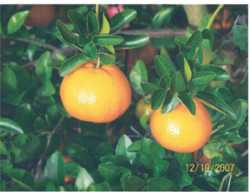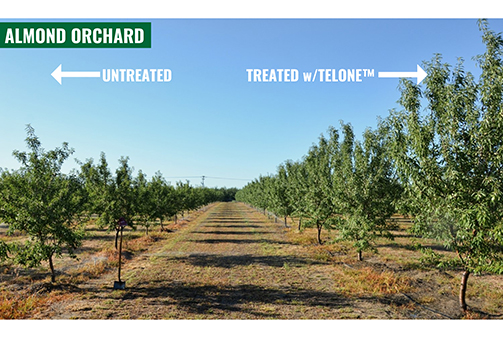
New Varieties Development & Management Corp.(NVDMC) serves as a central licensing entity for proprietary citrus varieties on behalf of the Florida citrus grower. Through this process, NVDMC is sometimes exposed to public domain varieties that are openly available to interested nurseries and growers. There are many public domain varieties of interest, but this month’s article will focus on several selections that are available in Florida.
W-Murcott
The W-Murcott is planted extensively in California and most other mandarin producing areas of the world. This variety shows little to no resemblance to the Murcott (Honey Tangerine), other than in name. The W-Murcott is known for high early production, high quality, easy peel, and the potential for a low-seed count. There are only a couple commercial plantings of W-Murcott in Florida, the most significant in north Lake County, with several known smaller plantings in Indian River, St. Lucie, and Hendry counties (and assorted small trials). W-Murcott will pass maturity in late November down south, and is generally a December through January tangerine elsewhere. Experiments with this variety in the Indian River area have not been conclusive, but several growers remain interested. The trees will trend toward over-production if not pruned and thinned. The fruit seems to size about like a Sunburst, are very easy peel, handle well post-harvest, and have good flavor and easy segment separation. If grown near other viable pollen, this fruit will have seed. Seed count varies from four to 15 in presence of pollen. If grown in isolation or netted, it can be very low seeded or seedless. The W-Murcott is openly available to nurseries through DPI. The Tango is the seedless version of the W-Murcott and is available through contract with NVDMC.
Thoro Temple
Temples were an important specialty Florida citrus variety for decades. Issues with high seed count and scab caused demand to decline. A private Miami citrus breeder discovered what was eventually named the Thoro Temple in 1942. The fruit was found to be seedless through successive propagations. The variety was successfully patented in 1977, though the patent is now expired. The Thoro Temple is successfully exported from South Africa as the Scarlett Mandarin to the U.S. and Europe. NVDMC trial trees planted on the Ridge have fruited this year for the first time. Fruit in Vero Beach is expected next year. The first fruit picked were not seedless, but were quite low-seeded compared with the standard Temple. The fruit looks like a Temple, peels reasonably well, and tastes like a Temple. In the presence of viable pollen, early fruit has had two to five seeds. Fruit may be seedless in isolation or solid plantings. Budwood is available from DPI. Rucks Citrus Nursery has small numbers of trees for trial.
Earlier Navel Oranges
Squash Growers Weigh in on Current State of the Crop
As was mentioned in the December 2010 edition of the Citrus Nursery Source, there are several newer (to Florida) navel selections available. Two of them are listed as somewhat earlier maturing, and are public domain. The Fisher Navel is slightly earlier than the Washington and Glenn. The Fukumoto Navel (Japanese) should be slightly earlier than the Fisher. Budwood for each is available through DPI. The Fukumoto does have some rootstock incompatibilities, so seek advice before propagating.
Cadenera Orange
The Cadenera is a small-sized sweet orange of Spanish origin (around 1870). This orange is generally seedless and has very good flavor. Maturity would be around November through December. The variety is good for fresh fruit sales and fresh juice, but off-flavors were detected when pasteurized. USDA-ARS has a mature tree at its A.H. Whitmore Foundation Farm in Leesburg. DPI maintains budwood for this variety.
Long Shots
For the adventurous types, here are some of the more unique varieties to consider.
Finger Limes
These are indigenous micro-citrus from Australia. Like most limes, finger limes are sensitive to cold. Also, they are likely more sensitive to canker. However, if brought to production, this is a high value, and very unique fruit. The fruit is small and oval in shape. When sliced perpendicular to the length and squeezed, the juice vesicles will pop out intact. Finger limes often are called citrus caviar. This little gourmet fruit is perfect for salads and as a garnish for fish. Limited quantities are grown in California. It really has not been tried in commercially in Florida. USDA-ARS has a number of accessions, and DPI maintains two budlines.
Seedless Kishu
Brought to Florida for breeding purposes, the Seedless Kishu may be of interest for gift and niche market players. The fruit is very small, sometimes half the size of a golf ball. It is very easy peel and very sweet. It is grown successfully in small-scale commercial plantings in California. Special equipment is needed to run and pack, as fruit will not run on standard equipment. Its commercial potential in Florida, if quality fruit can be produced, will be niche.
Pixie Mandarin
This seedless October through December (estimated) easy peeling tangerine comes from California. It was discovered in 1927, but not released until 1965. It has now found niche-market success in California on a small scale. The Pixie is known to bear first fruit somewhat later than typical and alternates bears. The tree grows quite vertical. Creative Florida growers need to see if they can have some success with the Pixie. It also might have dooryard potential. Start on a small scale. Its benefits are exceptional flavor, seedlessness, and it will hold a long time on the tree. Some Pixie are harvested through June in California.
0
1
5
Open Access For Citrus Growth
Peter Chaires is the executive director of the New Varieties Development & Management Corp. See all author stories here.











